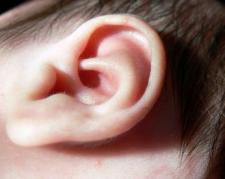Cochlear implants boosted by gene therapy plus tiny LEDs
By Clare Wilson,
New Scientist
| 07. 07. 2016
Can light restore hearing in deaf people? Researchers hope that through optogenetics, they can use micro-LED lights to make better cochlear implants than those used by deaf people today.
Standard cochlear implants function by stimulating nerves using an electrode placed inside the cochlea, a tiny spiral cavity inside the ear. These work, but sounds are distorted and muffled.
That’s because people who aren’t deaf can normally discriminate between about 2000 different sound frequencies, whereas cochlear implants allow only about a dozen to be distinguished. As a result, these implants make human speech sound a bit like that of a dalek, and music can be unpleasant.
Continue reading on New Scientist
Image via Flickr/Jessica Merz
Related Articles
By Françoise Baylis and Katie Hasson, The Conversation | 10.24.2024
By Fyodor Urnov, The CRIPSR Journal | 10.18.2024
The field of clinical gene editing has a bona fide crisis on its hands—a crisis that has to, and can be, promptly resolved.
An outside observer of our field might be surprised by this and say—what crisis? The first...
By Walt Bogdanich and Carson Kessler, The New York Times | 10.23.2024
By 2021, nearly 2,000 volunteers had answered the call to test an experimental Alzheimer’s drug known as BAN2401. For the drugmaker Eisai, the trial was a shot at a windfall — potentially billions of dollars — for defanging a disease...
By Gina Kolata, The New York Times | 10.21.2024
Kendric Cromer, 12, left Children’s National Hospital in a wheelchair on Wednesday, wearing a T-shirt and cap printed with designs from the anime series “Naruto” and a black face mask. Staff lined the hallway, cheering and waving noisemakers. He had...




